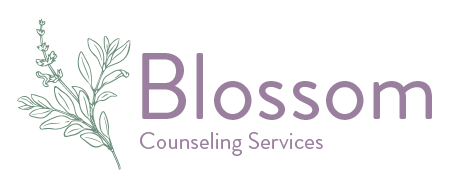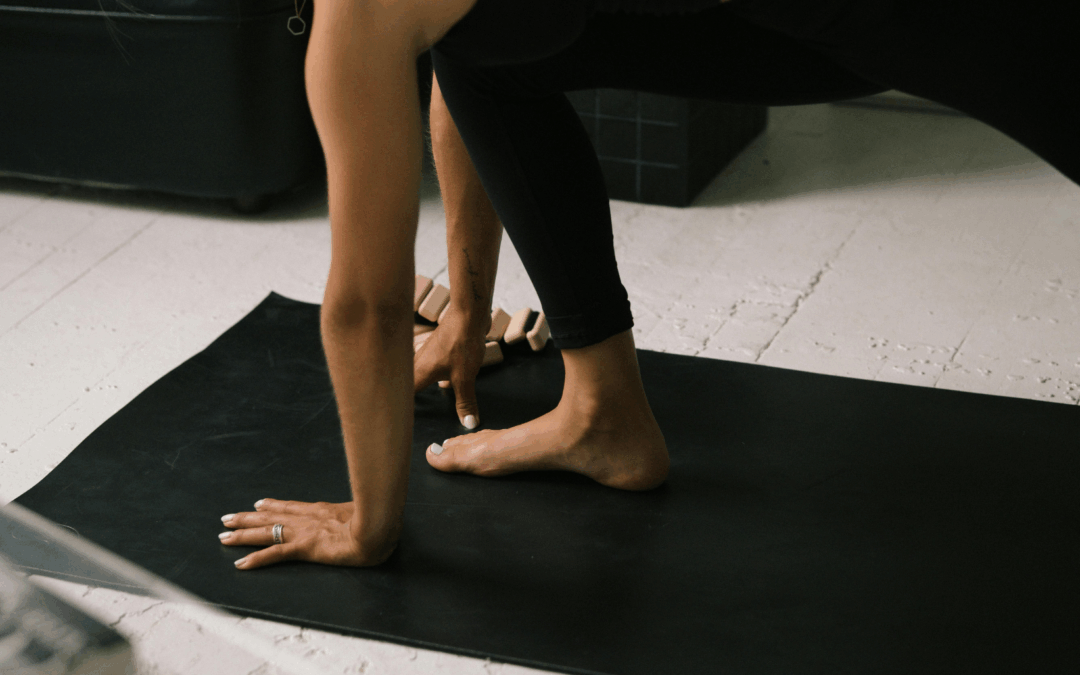Anxiety has a way of making you feel like you’re living life on fast-forward—heart racing, thoughts spinning, breath shallow. It pulls you into the future, into the what ifs and shoulds, leaving your body tense and your mind exhausted.
But what if healing didn’t mean fighting anxiety, but befriending your body again?
That’s where yoga for anxiety comes in.
It’s more than stretching or poses—it’s a practice of returning to the present moment, grounding yourself in breath and movement. Through intentional stillness and mindful flow, yoga gently rewires how your body and mind respond to stress.
In this guide, we’ll explore how yoga for anxiety can calm the nervous system, which styles are most effective, what the 3-3-3 anxiety rule means, and how yoga works hand in hand with therapy to support lasting emotional healing.
Which yoga is best for anxiety?
When it comes to yoga for anxiety, gentleness is key.
You don’t need power yoga or fast-paced flows. What your nervous system truly needs is safety—slow, rhythmic, and grounding movement that helps you reconnect with your body’s natural calm.
Here are a few types of yoga especially effective for easing anxiety:
- Hatha Yoga
Hatha yoga focuses on slow, steady postures and controlled breathing. It’s accessible to beginners and helps regulate the parasympathetic nervous system—the “rest and digest” response that counteracts anxiety’s constant “fight or flight” mode.
- Restorative Yoga
Restorative yoga is like pressing pause on the world. You hold gentle poses supported by props—blankets, bolsters, or cushions—allowing your muscles and mind to release tension. Practicing restorative yoga for anxiety can feel like giving your nervous system permission to exhale.
- Yin Yoga
Yin yoga targets deep connective tissues and encourages stillness. Each pose is held for several minutes, which invites emotional release and teaches you to sit with discomfort instead of resisting it. This makes yin yoga for anxiety particularly healing for people who carry stress in the body.
- Yoga Nidra (Yogic Sleep)
Yoga Nidra is a guided meditation practice that induces deep relaxation. You lie comfortably while being led through visualization and body awareness exercises. Studies have shown that Yoga Nidra can reduce cortisol levels and help improve sleep and emotional stability—key benefits of yoga for anxiety.
Each of these practices shares a common thread: they create space to breathe, notice, and let go.
What is the 3-3-3 anxiety rule?
If anxiety feels overwhelming, the 3-3-3 rule can help you ground yourself in the moment. It’s a simple yet powerful mindfulness tool often used in therapy and easily integrated into yoga for anxiety.
Here’s how it works:
- Look around and name three things you see.
- Listen for three sounds you can hear.
- Move three parts of your body—wiggle your toes, roll your shoulders, rotate your wrists.
This technique shifts your attention from racing thoughts to your physical surroundings. It brings you back into your body—a core principle of yoga for anxiety.
In yoga, this same grounding process happens through mindful movement and breath awareness. Every time you inhale deeply or feel your feet press into the mat, you’re signaling safety to your nervous system. The 3-3-3 rule and yoga share the same goal: to anchor you in the now, where anxiety loses its power.
Is doing yoga good for anxiety?
Absolutely—research consistently supports that doing yoga for anxiety can lower stress, reduce anxious thoughts, and improve emotional resilience. But beyond studies and science, what makes yoga truly powerful is how it helps you feel at home in your body again.
Here’s what happens on a physiological and emotional level when you practice yoga for anxiety:
- Yoga slows the breath—and the mind follows.
Deep, steady breathing activates the vagus nerve, which helps regulate your body’s stress response. Practices like pranayama (breath control) teach you to use your breath as a tool to calm racing thoughts and release tension.
- It balances your nervous system.
Gentle movement encourages blood flow, oxygenation, and relaxation. Over time, yoga retrains your body to return to balance more easily after moments of stress.
- It cultivates mindfulness and awareness.
Anxiety thrives on “what-ifs.” Yoga gently redirects your attention to “what is”—your breath, your body, your sensations. This practice of present awareness reduces rumination and helps you respond to stress with clarity instead of panic.
- It releases stored emotions.
Many people notice emotional releases during certain poses—like tears, sighs, or deep waves of calm. Yoga for anxiety works not only through movement but through permission—to feel, to release, and to rest.
- It builds resilience over time.
With consistent practice, yoga strengthens both your body and your emotional capacity. You begin to notice anxiety sooner, self-soothe more effectively, and recover faster after stressful situations.
Doing yoga for anxiety isn’t about perfection—it’s about presence. You don’t have to twist yourself into complicated shapes to benefit. Even a few minutes of deep breathing or child’s pose can begin to shift your energy and mood.
How yoga and therapy work together to support healing
Yoga and therapy are like two sides of the same healing coin. Therapy gives you the language to understand your emotions, while yoga helps your body release them.
For many people, anxiety isn’t just in the mind—it lives in the muscles, breath, and nervous system. You might intellectually understand your triggers, yet still feel your body clench with fear or tension. That’s where yoga for anxiety complements therapy beautifully.
Here’s how they work together:
- Therapy helps you explore the why—identifying thought patterns, emotional wounds, and behavioral triggers.
- Yoga helps you explore the how—how anxiety feels in your body, how to move through it, and how to create physical safety.
When used together, therapy and yoga form a holistic approach that supports healing from the inside out. For example, after a therapy session exploring difficult emotions, a restorative yoga class can help you process and integrate those insights somatically—calming the body so the mind can settle too.
Therapists who understand yoga or incorporate mindfulness often find it enhances progress in treatment for anxiety, trauma, and depression. The body becomes an ally in healing, not a battlefield.
Finding your flow: Small steps, big shifts
You don’t need an hour-long class or fancy gear to start using yoga for anxiety. You can begin right now, wherever you are.
Try this simple grounding sequence:
- Sit or stand tall.
- Inhale for four counts, feeling your belly expand.
- Hold for a brief moment.
- Exhale for six counts, letting your shoulders drop.
- Repeat five times.
Notice how your body feels after. Even a few mindful breaths can begin to shift your internal state. That’s the essence of yoga for anxiety—creating calm through awareness, one breath at a time.
If you’d like to build a deeper practice, consider:
- Morning grounding: Start your day with gentle stretches and breathwork.
- Midday reset: Take five minutes between tasks to practice deep breathing or seated twists.
- Evening unwind: End your day with legs-up-the-wall pose or Yoga Nidra meditation to prepare for restful sleep.
These small rituals train your body to find peace more quickly, even in stressful moments.
Final Thoughts: Returning home to yourself
Anxiety tells you that peace is something you have to chase. Yoga reminds you that peace has been inside you all along.
Through gentle breath, mindful movement, and awareness, yoga for anxiety helps you come home to your body—to a space where you feel grounded, capable, and safe. And when combined with therapy, this practice doesn’t just manage anxiety—it transforms your relationship with it.
You begin to see anxiety not as an enemy, but as a signal—a message that your body needs attention, compassion, and rest.
Healing happens in layers. Therapy helps you untangle the mental knots; yoga helps you release the tension that’s been holding them in place. Together, they guide you toward a more balanced, embodied sense of calm.
So the next time anxiety shows up, place your hand on your heart. Breathe in deeply. Feel your body beneath you. Let that breath remind you—you are here, you are safe, and you are capable of healing.
Peace isn’t somewhere out there. It’s right here, waiting in your breath.
Get Started
You may call, text message, email, or fill out the form to reach us. We will respond within 48 hours, Monday through Friday.
We Will Help You Find Your Fit
We know that looking for a counselor can feel overwhelming.
We are here to help guide you to the counselor that is best for your needs. If that counselor turns out to
not be in our practice, that's okay. We know great counselors that we'd be happy to refer you to.
What’s most important to us is that you get connected with the help you need. We are here for you.

